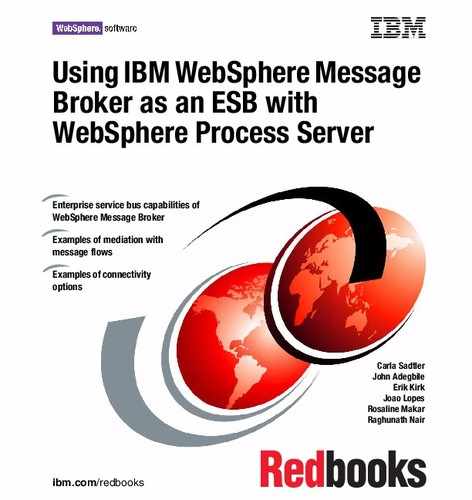Chapter 5. Scenario: Message splitting and routing 81
We describe the highlights of this scenario, numbered in Figure 5-1 on page 80,
as follows:
1. WebSphere Process Server hosts a business process that sends a multi-part
message to WebSphere Message Broker. The message contains a list of
orders.
2. The message is sent as a JMS message over an import component with an
MQ JMS binding. It is placed on a WebSphere MQ queue for delivery. This is
a one-way request. Therefore, no response is expected from the broker.
3. The delivery of the message triggers a message flow in the WebSphere
Message Broker to begin processing:
a. The message flow converts the JMS message to an MQ message with a
format that matches a message model. The message flow then splits the
message into separate instances while adhering to the message model.
Each instance represents a single order that must be delivered to the
correct supplier based on the supplier ID of the order.
b. Each instance is parsed to obtain the supplier ID. The destination queue is
set based on the destination queue that is retrieved from an externalized
relational database that corresponds to the supplier ID in the order.
4. The message is then routed to the destination queue that corresponds to the
supplier ID in the order message. The message is delivered as an MQ
message to a queue that is hosted by WebSphere MQ.
5.2 Environment
The scenario was developed in an environment with the following components:
? WebSphere Integration Developer 6.0.2.2
? WebSphere Process Server 6.0.2.0 (Build number o0648.28)
? WebSphere Application Server 6.0.2.17 (Build number cf170648.10)
? WebSphere Message Broker run time 6.0.0.5
? WebSphere Message Brokers Toolkit 6.0.2 (Interim Fix 009)
? WebSphere MQ 6.0.0.0
? DB2® Enterprise Server 8.1.7.445
..................Content has been hidden....................
You can't read the all page of ebook, please click here login for view all page.
